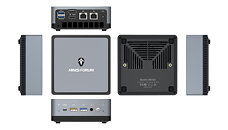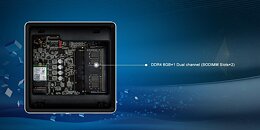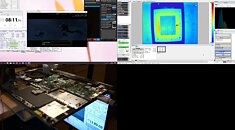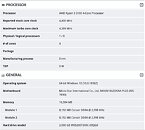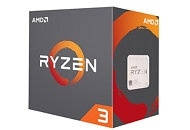
AMD Ryzen AI 9 HX 475 & 470 "Gorgon Point" APUs Surface in Shipping Manifests
Last month, a confidential presentation in China gave AMD's laptop partners their first glimpse of what's coming next. The slides hinted at modest clock-speed improvements and the addition of more entry-level models, all under the codename "Gorgon Point." Not long after, NBD's shipping manifests today show a series of new FP8, FP10, and FP12 product codes. These identifiers don't match any existing "Strix Point" or "Kracken Point" chips, so it's clear AMD is gearing up for a Ryzen AI 400-series refresh set to roll out around mid-2026. Despite the new name, Gorgon Point sticks with the same winning formula. It still uses Zen 5 and Zen 5c CPU cores alongside RDNA 3.5 graphics and XDNA 2 neural accelerators. Core counts haven't changed, so you'll see configurations ranging from 4 to 12 cores just like before, with up to 4x Zen 5 and 8x Zen 5c cores.
What's different, according to the leaked partner slides, is a slight bump in boost clocks. The top-end Ryzen AI 9 HX 475 and 470 chips are now rated for up to 5.2 GHz, a slight but welcome increase from the previous 5.1 GHz, while maintaining a 28 W default TDP. AMD is also broadening its reach into budget laptops. In addition to the Ryzen 9 HX upgrades, the company will introduce new Ryzen 5 and Ryzen 3 models. Early leaks mention parts numbered 440 and 430, as well as a mystery Ryzen 3 SKU. These entry-level chips will use the same Gorgon Point silicon but will be tuned for cost-sensitive devices. Branding will likely follow AMD's recent pattern. Given how AMD has renumbered previous families, slotting Gorgon Point into familiar retail channels should be straightforward. Until AMD makes an official announcement, these shipping manifests and partner leaks are the best clues we have about the performance and efficiency gains in the next wave of AI-accelerated laptops.
What's different, according to the leaked partner slides, is a slight bump in boost clocks. The top-end Ryzen AI 9 HX 475 and 470 chips are now rated for up to 5.2 GHz, a slight but welcome increase from the previous 5.1 GHz, while maintaining a 28 W default TDP. AMD is also broadening its reach into budget laptops. In addition to the Ryzen 9 HX upgrades, the company will introduce new Ryzen 5 and Ryzen 3 models. Early leaks mention parts numbered 440 and 430, as well as a mystery Ryzen 3 SKU. These entry-level chips will use the same Gorgon Point silicon but will be tuned for cost-sensitive devices. Branding will likely follow AMD's recent pattern. Given how AMD has renumbered previous families, slotting Gorgon Point into familiar retail channels should be straightforward. Until AMD makes an official announcement, these shipping manifests and partner leaks are the best clues we have about the performance and efficiency gains in the next wave of AI-accelerated laptops.










































